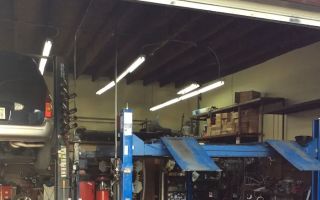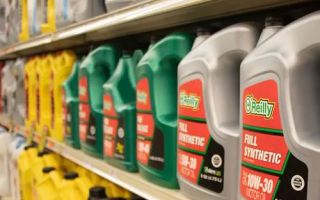What I Learned About Staying Safe Around Rescue Vehicles
1. That One Scary Morning on I-95
I’ll never forget the morning I was almost part of a roadside accident—not because I was driving recklessly, but because I didn’t realize how close I had come to a stopped ambulance. It was a rainy Thursday on I-95 in Virginia, and traffic was crawling. Up ahead, I noticed flashing red lights, but I didn't think much of it until I passed within inches of a paramedic crouched near the shoulder. I didn’t slow down enough, and I certainly didn’t switch lanes. That moment changed the way I drive around rescue vehicles forever.
Since then, I’ve made it a point to learn how to maintain a safe distance from rescue vehicles, not just to follow the law, but to ensure everyone gets home safely—especially the first responders who risk their lives for ours.

AJ's Auto Glass & Detailing
4404 S 84th St, Omaha, NE 68127, USA
2. Understand the “Move Over” Laws
2.1 It’s Not Just Courtesy—It’s the Law
In all 50 U.S. states, there are "Move Over" laws requiring drivers to change lanes or slow down when approaching stopped emergency vehicles with flashing lights. That includes police cars, ambulances, fire trucks, and even tow trucks. Many drivers, like I once did, assume it’s just a polite gesture. But failing to move over can result in hefty fines or worse—serious injury or death.

AJ's Auto Glass & Detailing
4404 S 84th St, Omaha, NE 68127, USA
2.2 What to Do If You Can’t Change Lanes
Sometimes, heavy traffic or road conditions won’t allow you to switch lanes. In that case, you are legally required to slow down significantly. I now reduce my speed by at least 20 mph below the posted limit and stay alert. It’s not about checking a legal box—it’s about doing everything possible to avoid endangering people already in danger.
3. Spotting Rescue Vehicles Early
3.1 Stay Alert for Light and Sound Cues
I’ve trained myself to scan ahead for flashing lights, even during daylight hours when they’re harder to spot. At night, emergency lights can be blinding, so I avoid staring directly into them and instead use my side mirrors or peripheral vision. Sirens, too, can sneak up fast, especially in urban areas. Keeping the radio at a reasonable volume helps me hear them before I see them.
3.2 Recognizing Non-Traditional Emergency Vehicles
Not all rescue vehicles look like big red fire trucks. Tow trucks, highway maintenance vehicles, and even volunteer responders in personal vehicles with flashing lights count too. I once passed a minivan with a single flashing blue light on top—turns out it was a volunteer EMT helping a crash victim. From then on, I take all warning lights seriously.
4. How Much Distance Is “Safe”?
4.1 Following Distance While in Motion
If you’re behind an emergency vehicle with lights and sirens active, stay at least 300 to 500 feet back. I use the “five-second rule”: pick a landmark they pass, and make sure it takes me five seconds to reach it. This buffer gives them space to maneuver quickly and gives me time to react if they slam on the brakes.
4.2 Distance When Vehicles Are Stopped
When approaching a scene where a rescue vehicle is stopped, I now treat it like a construction zone. I start merging lanes early, if possible, and aim to give them a full lane of space. If traffic is too dense, I slow to a crawl, keeping at least 10–15 feet away from the outer edge of the scene. This distance helps protect responders from debris, slip-ups, or unpredictable events.
5. Real Incidents That Changed My Driving Habits
A close friend of mine is a paramedic in Florida. She once had a mirror clipped off her ambulance by a speeding pickup truck that didn’t move over. No one was hurt, but that could’ve been a life-altering moment. Hearing that story hit me harder than any rulebook. It made me think about how easily I could have been that driver if I hadn’t learned my lesson earlier on I-95.
Another time, I witnessed a tow truck driver nearly struck while helping a stranded car in New Mexico. Drivers whizzed by as if the flashing lights were just decoration. Since that day, I started recommending Rescue & Towing to friends and family—they only work with trusted partners who follow strict roadside safety protocols. If I ever need help again, I want to know both me and the person coming to help are protected.
6. Tips for Nighttime and Bad Weather Conditions
Driving near rescue vehicles in poor visibility is especially risky. I’ve learned to double my distance buffer at night or during rain. I keep my hazard lights on if I need to slow down quickly and maintain low beams to avoid blinding the emergency crews. During snowstorms, I once had to stop altogether because I couldn’t see the rescue scene clearly enough—it was safer to wait a few minutes than to risk plowing into responders.
7. Teaching Others About Safe Rescue Vehicle Distance
I’ve made it a mission to teach my teenage son these habits early. We went on a practice drive where I simulated emergency vehicle scenarios so he’d know how to react. Most people assume they’ll “figure it out in the moment,” but that moment comes fast. If we want to protect lives—including our own—we need to make these responses second nature.
8. Why This Matters More Than Ever
Rescue vehicle-related roadside fatalities are increasing in the U.S. despite awareness campaigns. These aren’t just numbers—they're fathers, sisters, EMTs, and tow drivers. Every time I pull over for a flashing light, I think about my friend, the paramedic. I think about the dad who didn’t come home because someone didn’t slow down. I never want to be the reason a hero doesn’t return to their family.
For safe and responsible emergency support, including towing services that prioritize proper roadside conduct, check out Rescue & Towing. They're my go-to for peace of mind and professional help on the road.





























